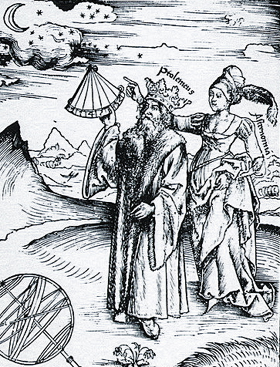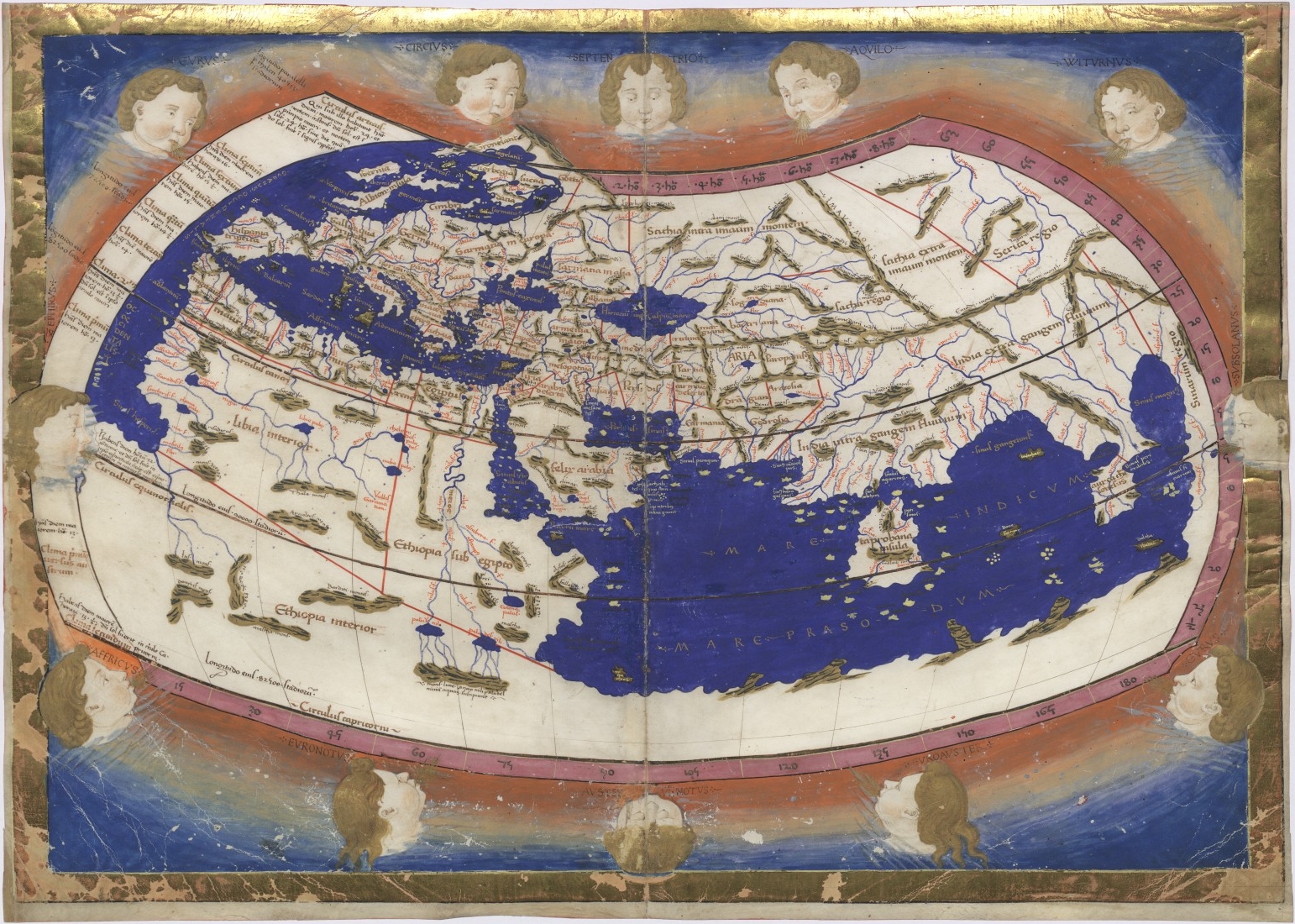|
The Situations And Names Of Winds
''The Situations and Names of Winds'' ( grc-gre, Περὶ θέσεως ἀνέμων; la, Ventorum Situs) is a spurious fragment traditionally attributed to Aristotle. The brief text lists winds blowing from twelve different directions and their alternative names used in different places. According to the manuscript version of the work, ''The Situations and Names of Winds'' is an extract from a larger work entitled ''On Signs'' (''De Signis'')Ross (1995:7). likely written by a pseudo-Aristotle of the peripatetic school. ''Situations'' is notable as an ancient text which reproduces the concepts of the Anemoi or "wind gods" and classical compass winds, both of which have been historical components of western culture. Synopsis ''Situations'' is the shortest piece traditionally attributed to Aristotle as part of the Corpus Aristotelicum, occupying a single two-column page (973) in Bekker's standard reference edition of Aristotle's complete works. The twelve winds, described in ... [...More Info...] [...Related Items...] OR: [Wikipedia] [Google] [Baidu] |
Aristotle
Aristotle (; grc-gre, Ἀριστοτέλης ''Aristotélēs'', ; 384–322 BC) was a Greek philosopher and polymath during the Classical Greece, Classical period in Ancient Greece. Taught by Plato, he was the founder of the Peripatetic school of philosophy within the Lyceum (classical), Lyceum and the wider Aristotelianism, Aristotelian tradition. His writings cover many subjects including Physics (Aristotle), physics, biology, zoology, metaphysics, logic, ethics, aesthetics, Poetics (Aristotle), poetry, theatre, music, rhetoric, psychology, linguistics, economics, politics, meteorology, History of geology, geology, and government. Aristotle provided a complex synthesis of the various philosophies existing prior to him. It was above all from his teachings that Western culture, the West inherited its intellectual lexicon, as well as problems and methods of inquiry. As a result, his philosophy has exerted a unique influence on almost every form of knowledge in the West a ... [...More Info...] [...Related Items...] OR: [Wikipedia] [Google] [Baidu] |
Notus
In ancient Greek religion and myth, the Anemoi (Greek: , 'Winds') were wind gods who were each ascribed a cardinal direction from which their respective winds came (see Classical compass winds), and were each associated with various seasons and weather conditions. They were the progeny of the goddess of the dawn Eos and her husband Astraeus. Etymology The earliest attestation of the word in Greek and of the worship of the winds by the Greeks, are perhaps the Mycenaean Greek word-forms , , , , i.e. 'priestess of the winds'. These words, written in Linear B, are found on the KN Fp 1 and KN Fp 13 tablets. Mythology The Anemoi are minor gods and are subject to the god Aeolus. They were sometimes represented as gusts of wind, and at other times were personified as winged men. They were also sometimes depicted as horses kept in the stables of the storm god Aeolus, who provided Odysseus with the Anemoi in the ''Odyssey''. The Spartans were reported to sacrifice a horse to ... [...More Info...] [...Related Items...] OR: [Wikipedia] [Google] [Baidu] |
Classical Compass Winds
In the ancient Mediterranean world, the classical compass winds were names for the points of geographic direction and orientation, in association with the winds as conceived of by the ancient Greeks and Romans. Ancient wind roses typically had twelve winds and thus twelve points of orientation, sometimes reduced to eight or increased to twenty-four. Originally conceived as a branch of meteorology, the classical wind rose had only a tentative relationship with actual navigation. The Classical 12-point wind rose was eventually displaced by the modern compass rose (8-point, 16-point and 32-point), adopted by seafarers during the Middle Ages. Origins It is uncertain when or why the human sense of geographic orientation and direction became associated with winds. It is probable that for ancient settled populations, local physical landmarks (e.g. mountains, deserts, settlements) were the initial and most immediate markers of general direction ("towards the coast", "towards the hil ... [...More Info...] [...Related Items...] OR: [Wikipedia] [Google] [Baidu] |
Ptolemy's World Map
The Ptolemy world map is a map of the world known to Greco-Roman societies in the 2nd century. It is based on the description contained in Ptolemy's book ''Geography'', written . Based on an inscription in several of the earliest surviving manuscripts, it is traditionally credited to Agathodaemon of Alexandria. Notable features of Ptolemy's map is the first use of longitudinal and latitudinal lines as well as specifying terrestrial locations by celestial observations. The ''Geography'' was translated from Greek into Arabic in the 9th century and played a role in the work of al-Khwārizmī before lapsing into obscurity. The idea of a global coordinate system revolutionized European geographical thought, however, and inspired more mathematical treatment of cartography. Ptolemy's work probably originally came with maps, but none have been discovered. Instead, the present form of the map was reconstructed from Ptolemy's coordinates by Byzantine monks under the direction of Maximus ... [...More Info...] [...Related Items...] OR: [Wikipedia] [Google] [Baidu] |
Claudius Ptolemy
Claudius Ptolemy (; grc-gre, Πτολεμαῖος, ; la, Claudius Ptolemaeus; AD) was a mathematician, astronomer, astrologer, geographer, and music theorist, who wrote about a dozen scientific treatises, three of which were of importance to later Byzantine, Islamic, and Western European science. The first is the astronomical treatise now known as the ''Almagest'', although it was originally entitled the ''Mathēmatikē Syntaxis'' or ''Mathematical Treatise'', and later known as ''The Greatest Treatise''. The second is the ''Geography'', which is a thorough discussion on maps and the geographic knowledge of the Greco-Roman world. The third is the astrological treatise in which he attempted to adapt horoscopic astrology to the Aristotelian natural philosophy of his day. This is sometimes known as the ''Apotelesmatika'' (lit. "On the Effects") but more commonly known as the '' Tetrábiblos'', from the Koine Greek meaning "Four Books", or by its Latin equivalent ''Quadripa ... [...More Info...] [...Related Items...] OR: [Wikipedia] [Google] [Baidu] |
Nicolaus Germanus
Nicolaus Germanus () was a German cartographer who modernized Ptolemy's ''Geography'' by applying new projections, adding additional maps, and contributing other innovations that were influential in the development of Renaissance cartography. Name In the fifteenth century it was common for scholars and artisans to adopt a Latinized version of their birth name. Nicolaus Germanus is the Latin form of the name "Nicholas the German". His full birth name is unknown. His name is sometimes preceded by "''Donnus''" or "''Donus''", an abbreviated form of the Latin title ''Dominus'' ("Lord" or "Master"). Life Nothing is known about the early life of Nicolaus Germanus. He first appears in the records of the Reichenbach Priory (now in Baden-Württemberg) where he was prior of the Benedictine monastery in 1442. It appears that he was trained in cosmography around 1460 and arrived in Italy by 1464.Meurer 2007 pp. 1182-1183 He lived first in Florence where he compiled astrological tables ... [...More Info...] [...Related Items...] OR: [Wikipedia] [Google] [Baidu] |
Meteorology (Aristotle)
''Meteorology'' (Greek: ; Latin: ''Meteorologica'' or ''Meteora'') is a treatise by Aristotle. The text discusses what Aristotle believed to have been all the affections common to air and water, and the kinds and parts of the earth and the affections of its parts. It includes early accounts of water evaporation, earthquakes, and other weather phenomena. An Arabic compendium of ''Meteorology'', called ' ( ar, ) and produced by the Antiochene scholar Yahya Ibn al-Batriq, was widely circulated among Muslim scholars over the following centuries. This was translated into Latin by Gerard of Cremona in the 12th century – and by this means, during the Twelfth-century Renaissance, entered the Western European world of medieval scholasticism. Gerard's "old translation" (''vetus translatio'') was superseded by an improved text by William of Moerbeke, the ''nova translatio'', which was widely read, as it survives in numerous manuscripts; it received commentary by Thomas Aquin ... [...More Info...] [...Related Items...] OR: [Wikipedia] [Google] [Baidu] |
Boreas (god)
In ancient Greek religion and myth, the Anemoi ( Greek: , 'Winds') were wind gods who were each ascribed a cardinal direction from which their respective winds came (see Classical compass winds), and were each associated with various seasons and weather conditions. They were the progeny of the goddess of the dawn Eos and her husband Astraeus. Etymology The earliest attestation of the word in Greek and of the worship of the winds by the Greeks, are perhaps the Mycenaean Greek word-forms , , , , i.e. 'priestess of the winds'. These words, written in Linear B, are found on the KN Fp 1 and KN Fp 13 tablets. Mythology The Anemoi are minor gods and are subject to the god Aeolus. They were sometimes represented as gusts of wind, and at other times were personified as winged men. They were also sometimes depicted as horses kept in the stables of the storm god Aeolus, who provided Odysseus with the Anemoi in the '' Odyssey''. The Spartans were reported to sacrifice ... [...More Info...] [...Related Items...] OR: [Wikipedia] [Google] [Baidu] |
Princeton University Press
Princeton University Press is an independent Academic publishing, publisher with close connections to Princeton University. Its mission is to disseminate scholarship within academia and society at large. The press was founded by Whitney Darrow, with the financial support of Charles Scribner II, Charles Scribner, as a printing press to serve the Princeton community in 1905. Its distinctive building was constructed in 1911 on William Street in Princeton. Its first book was a new 1912 edition of John Witherspoon's ''Lectures on Moral Philosophy.'' History Princeton University Press was founded in 1905 by a recent Princeton graduate, Whitney Darrow, with financial support from another Princetonian, Charles Scribner II. Darrow and Scribner purchased the equipment and assumed the operations of two already existing local publishers, that of the ''Princeton Alumni Weekly'' and the Princeton Press. The new press printed both local newspapers, university documents, ''The Daily Princetonian ... [...More Info...] [...Related Items...] OR: [Wikipedia] [Google] [Baidu] |
Bekker Numbering
Bekker numbering or Bekker pagination is the standard form of citation to the works of Aristotle. It is based on the page numbers used in the Prussian Academy of Sciences edition of the complete works of Aristotle and takes its name from the editor of that edition, the classical philologist August Immanuel Bekker (1785–1871); because the Academy was located in Berlin, Germany, the system is occasionally referred to by the alternative name Berlin numbering or Berlin pagination. Bekker numbers consist of up to three ordered coordinates, or pieces of information: a number, the letter a or b, and another number, which refer respectively to the page number of Bekker's edition of the Greek text of Aristotle's works, the page column (a standard page of Bekker's edition has exactly two columns), and the line number (total lines typically ranging from 20-40 on a given column or page in Bekker's edition). For example, the Bekker number denoting the beginning of Aristotle's ''Nicomache ... [...More Info...] [...Related Items...] OR: [Wikipedia] [Google] [Baidu] |
Corpus Aristotelicum
The Corpus Aristotelicum is the collection of Aristotle's works that have survived from antiquity through medieval manuscript transmission. These texts, as opposed to Aristotle's works that were lost or intentionally destroyed, are technical philosophical treatises from within Aristotle's school. Reference to them is made according to the organization of Immanuel Bekker's nineteenth-century edition, which in turn is based on ancient classifications of these works. Overview of the extant works The extant works of Aristotle are broken down according to the five categories in the Corpus Aristotelicum. Not all of these works are considered genuine, but differ with respect to their connection to Aristotle, his associates and his views. Some are regarded by most scholars as products of Aristotle's "school" and compiled under his direction or supervision. (The '' Constitution of the Athenians'', the only major modern addition to the Corpus Aristotelicum, has also been so regarded.) ... [...More Info...] [...Related Items...] OR: [Wikipedia] [Google] [Baidu] |






